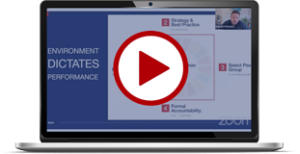It’s often said that it takes a village to raise a child – the same could be said about publishing a book.
While it is possible to do it all yourself in Microsoft Word, Photoshop and uploading your files to one of the many free eBook sites available, this approach is rife with potential pitfalls and it’s difficult to achieve a professional result on your own (especially if this is your first self-published book).
Yet the quality of your end result is crucial. Like any business collateral you create, your book is a representation of your business. In many cases, it will be a potential client’s first interaction with your business, and it will lead them to make a number of assumptions about who you are and the quality of your products or services.
If your book is of a high-quality, with a professionally produced cover, good quality paper and compelling content that’s clearly organised and well written, then they are more likely to see you as a leader in your industry and the type of entrepreneur to charge premium prices for premium services.
On the other hand, if your cover looks like a DIY job, the paper and binding is of a poor quality and your book is riddled with repetition, holes in your argument and grammatical errors, it’s going to be difficult to persuade your readers to pay top dollar to work with you.
What’s the solution?
Unless you happen to be an excellent editor and designer along with being a PR and marketing guru and having your own printing press, you’ll need a team to get the best results.
Who do you need on your publishing team?
To self-publish a great business book, you’ll need the following members on your team:
- Editor: Many self-publishers think they can skimp on editing costs and often just find someone who will correct their book from a language perspective. Instead, a good editor will look at the structure and content of your book and will give advice on how it could best be organised, how to remove repetition and rambling and how you can fill any gaps in your argument. It’s only once these macro issues have been addressed that you can move on to the micro issues of spelling and grammar.
- Beta readers: Beta readers (either other people in your industry or people who meet your target reader demographic) can be very good at providing feedback on your content. However, because they aren’t a paid supplier it can be challenging to find people who will get back to you within your desired timeframe, and who will give you useable feedback. If your book needs a lot of work from a structure and content perspective, they may also struggle to diagnose any issues, so I usually recommend sending your book to beta readers after an initial edit. This means they can make more specific comments on paragraphs, examples and chapters that do/don’t work, rather than tackling the book as a whole.
- Proofreader: Proofreaders are language technicians. Where a structural editor will look at your book as a whole, a proofreader will be looking at individual words to catch any remaining grammatical errors, spelling mistakes, typos and incorrect punctuation.
- Cover designer: Your cover designer will design your front cover, back cover and spine. They can also help with other marketing collateral, like postcards, bookmarks and images for online marketing.
- Internal layout designer/typesetter: Depending on your designer’s skillset, this may or may not be your cover designer. In the past, typesetters focused on the appearance of the words themselves (font, spacing, justified text, when to break words across lines, etc.) while internal designers focused on tables, graphics and the appearance of the page as a whole. Over time, these roles merged, and a single designer will usually look at both.
- Illustrator: If you want your book to have cartoons or a lot of diagrams, it can be good idea to engage an illustrator to create a consistent look throughout your book, as well as to ensure all of your images are print quality. Your designer may also be able to help with this, depending on their skillset.
- eBook designer: Again, depending on your designer’s skills, this may be your internal layout designer or you might need to find a separate contractor. In many cases, if your physical book is designed according to your eBook distributor’s guidelines (see https://www.bookbaby.com/ebook-conversion-tips for an example of this), you will be able to upload the PDF directly.
- Printer: If you want physical copies of your books, you will need a printer to print them! Some authors just rely on print-on-demand copies, but I find that getting a short print run with a local printer often means you have a better per-book cost, and you also have more say over the quality.
- Online distributor: Here you have the option of uploading your eBook and print-on-demand files to each online store individually, or using an online eBook distributor to upload your files to every store in one go.
- Bricks-and-mortar distributor: If selling your book in stores is important to you, you can approach stores independently, or you can use a book distribution company, which will already have relationships with the major retailers in your area.
- Marketing and PR help: The most challenging part of publishing a book often isn’t the writing or production – it’s what happens next. Many authors rely on their networks for marketing, but if you really want to make an impact, it could be worth getting some professional marketing and PR help.
Depending on your skills and your requirements, you may need some or all of these suppliers. In my experience, the suppliers every author needs are editors, proofreaders, cover and internal layout designers and printers.












